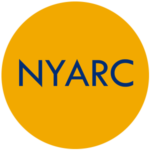Uniform Adoption Act of 1994
by Shea Grimm
The Uniform Adoption Act of 1994 was drafted, as are all proposed uniform acts, by the National Conference of Commissioners on Uniform State Laws (NCCUSL). Drafts of uniform laws that are produced by NCCUSL are introduced in state legislators and can be passed in whole or in part, although the intent is to standardize practices across the nation. Other uniform adoption laws, like the Uniform Adoption Act of 1969, was only successful in a handful of states, which led to NCCUSL’s consideration of a new draft five years ago. The Uniform Adoption Act was formally accepted as a uniform proposal in 1994, despite outrage and condemnation from many diverse, national organizations including:
- Child Welfare League of America
- National Association of Social Workers
- Adoptive Families of America
- Catholic Charities USA
- American Adoption Congress
- Concerned United Birthparents
- National Adoption Center
- Adoption Exchange Association
- Children Awaiting Parents
- New York State Citizens’ Coalition for Children
- Bastard Nation
- Internet Adoptee’s Mailing List
- Joint Council on International Children’s Services.
The Uniform Adoption Act seals adoption records for 99 years, criminalizes searching, shortens revocable consent periods that many states have already enacted, to a dismal 8 days from the birth of the child (not relinquishment, *birth*), does not define non-identifying information, and creates a muddled mutual consent registry that virtually ensures that no exchange of information, even between willing parties, will be made. The act allows a birth parent to relinquish a child without the consent of a birthfather if she states that his whereabouts are unknown or that she does not know the birthfather’s identity. The sections on preplacement evaluations of prospective adoptive parents are clearly intended to make it easier for couples to adopt rather than ensure that the best interests of the child are being served. In fact, the entire UAA, as evidenced by its supporters and detractors, is clearly meant to make it easier to adopt by increasing the number of babies available through shorter consent periods, lack of adequate birthfather notification controls, removing barriers to transracial adoption, terminating former contact agreements between original families and their children, and making it easier and more attractive to adopt with easier homestudies that are effective for 18 months rather than the 30 days that is now standard practice, sealing records and making it difficult for adoptees to search, and in general altering the system so that it works in favor of the prospective adoptive parent, against the adoptee, against the birthfather, and against the birthfamily in general.
Perhaps the climate that the UAA was enacted in can best be summed up with a story from one of the drafting sessions. Originally in the drafting process, records were to be sealed for 70 years, until an adoptive parent in attendance expressed concern that under that scenario, conceivably a 70 year old adoptee could still locate a living 88 year old birthmother.
The Uniform Adoption Act is supported by very few, namely the National Council for Adoption and a handful of their supporting agencies, including the NCFA’s parent agency, the Edna Gladney Home.
The Uniform Adoption Act, like all model acts, can be introduced and passed in whole or in part by the state legislatures. To date, the UAA has been roundly rejected by the states, which is encouraging. Nonetheless, it would be preferable to see the progressive adoption reform movement launch their own model adoption act instead of playing this game permanently on the defensive.
- The National Conference Of Commissioners On Uniform State Laws Organization
- Child Welfare League of America – Analysis of the Proposed Uniform Adoption Act
- National Association of Social Workers – Statement on the Uniform Adoption Act
- American Adoption Congress – Statement In Opposition To The Uniform Adoption Act of 1994
- National Adoption Center – Position on the Uniform Adoption Act
- Adoption Exchange Association – Statement on the Uniform Adoption Act
- Statement by the Adoptee’s Internet Mailing List Regarding the Uniform Adoption Act
- Holt International Children’s Services – Statement on the Uniform Adoption Act
- History of the National Committee/Council for Adoption
- Memo from NCFA’s Bill Pierce to NJ Legislature and Adoption Agencies




